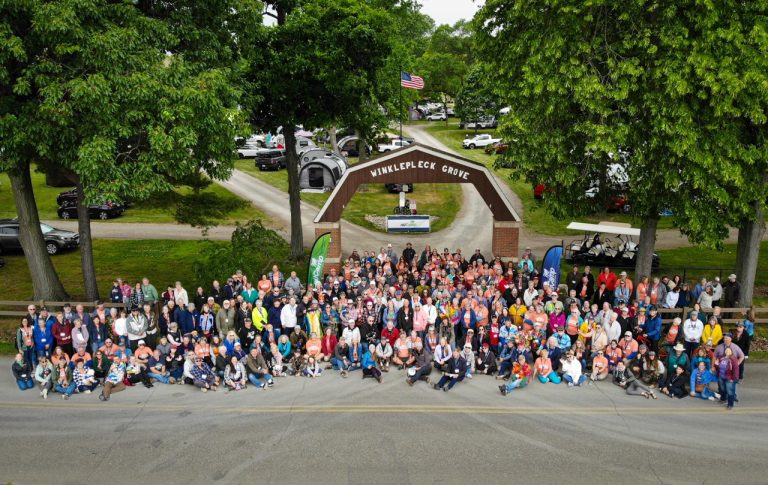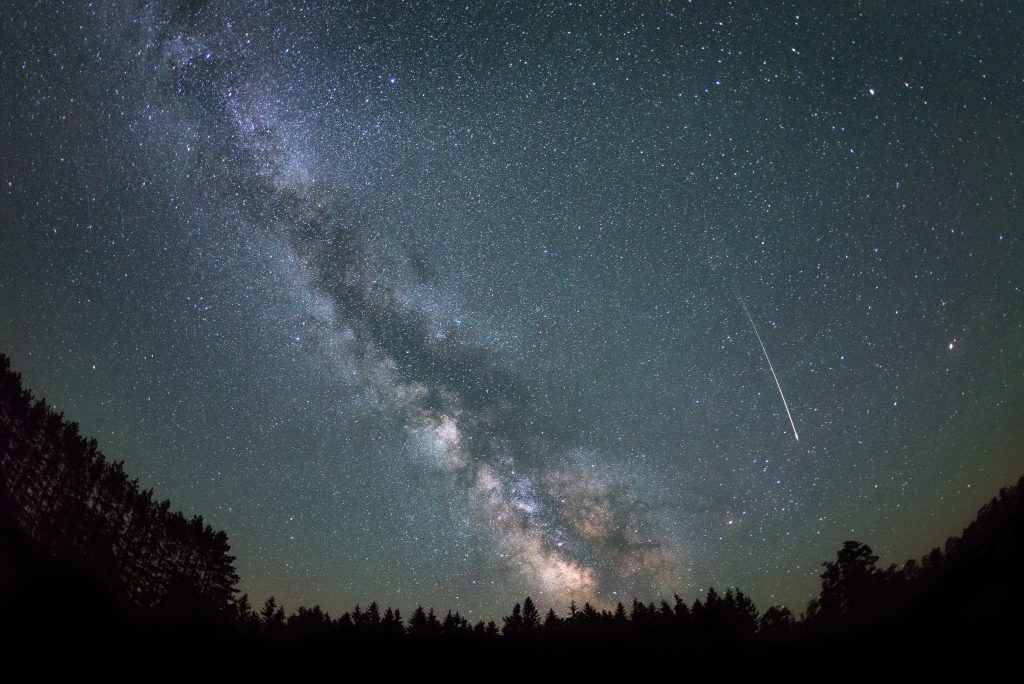While you’re traveling, it’s only common sense to keep your eyes focused on the road. But once your camper is parked and you’ve settled in for the evening, then it’s time to stop looking ahead and instead look up at the heavens.
Stargazing offers a host of benefits. It is a wonderful way to relax and slow down your mind, getting you ready for a good night’s sleep. An hour or two focusing on the stars can also inspire creativity, as it opens your imagination to the wonders of a world that you can only see but never touch. And watching the heavens move above you can give you a sense of your place in the natural world. Finally, if you’re traveling with companions, it can also serve as an enjoyable pastime, as all of you vie to be the first to discover the various constellations that appear in the sky.
Of course, you can settle for using just your eyes to view what Ralph Waldo Emerson called “the ultimate art gallery just above us.” But to get the most out of your stargazing adventure, you might want to consider using the following apps and tools.
Stargazing Apps
The following nine apps for both iOS and Android devices, selected from lists on the Astro Backyard, CNET, Vito Technology, and PC Magazine websites, will help you discover more about the stars, planets, and constellations in the night sky.
Constellation Map (iOS and Android) displays the names of the stars, constellations, and planets when you point your device at the sky. Free.
Good to Stargaze (iOS and Android) provides weather forecasts, seeing, transparency, and light pollution, all in one convenient tool. Free.
ISS Detector (iOS and Android) tells you where and when to spot the International Space Station. Free.
My Aurora Forecast (iOS and Android) tells you how likely it is that you’ll see the aurora borealis, as well as details about the solar winds and high-resolution sun imagery. Free.
Night Sky (iOS and Android) enables you to see the actual stars of the night sky on your phone in Augmented Reality. Free.
SkyPortal (iOS and Android) is an astronomy suite that enables you to explore the Solar System, 120,000 stars, over 200 star clusters, nebulae, galaxies, and dozens of asteroids, comets, and satellites—including the ISS. It can also be connected to a compatible Celestron WiFi telescope. Free.
Sky Tonight (iOS and Android) is a customizable stargazing tool that will answer the three most common questions — What is that bright dot in the sky? What astronomical events can I see tonight, and how can I find the object I’m interested in? — as well as providing other information. Free.
Star Tracker (iOS and Android) shows 88 constellations, over 8,000 deep-sky objects, and the sun, moon, and planets, all in real-time, using a 3D compass in AR mode. Free.
Stellarium (iOS and Android) shows exactly what you see when you look up at the sky: stars, constellations, planets, comets, satellites, and other deep sky objects, and has an easy-to-use and minimalist user interface. Free.
Stargazing Tools
Binoculars
When selecting binoculars, there are two numbers to keep in mind: magnification and aperture. Magnification refers to how much larger the item you’re observing will appear, and aperture is the diameter of the large front lenses measured in millimeters. Moon and Back® recommends choosing one with a low magnification (the first number) and a large aperture (the second number), since, if the magnification is too high, you’ll have a darker image and a smaller field of view.
For older stargazers (50 and up), Cosmic Pursuits recommends 7×35 or 8×42 binoculars because they will provide better viewing. That’s because older eyes have a smaller dark-adapted exit pupil. Also, you can skip your corrective lens (glasses or contacts) if you’re near- or far-sighted, said Cosmic Pursuits, although you may need them if you have astigmatism.
Telescopes
According to Moon and Back, telescopes are available in three types: the Newtonian Reflector (best for observing faint Deep Sky Objects), Galilean Refractor (best for giving the sharpest image for lunar and planetary observations), and Schmidt-Cassegrain (a good all-around performer and is often used for astrophotography).
Since almost all consumer telescopes come with two eyepieces, TelescopesPlus recommends one with lower magnification (usually around 25mm) and one with higher power (around 10mm) for a closer view.
Celestron’s night vision flashlights come in a range of models and prices. The primary purpose is to be able to keep your night vision intact via the red light while still being able to read notes or adjust settings on your equipment. (Note: it also won’t disturb fellow stargazers like a regular flashlight or even the regular light from your cell phone will!)
More Stargazing Information
Want to join up with other stargazers? Interested in learning more about the night sky? Check out the following websites.
Night Sky Network has a searchable calendar of astronomy events and club meetings. Just input your location, and the calendar will provide details.
The EarthSky website provides a host of information, including the best places to stargaze.
Sky & Telescope, part of the American Astronomical Society, covers all aspects of the science and hobby of astronomy, from scientific discoveries to what’s in the sky tonight and the latest equipment.
Recent Articles





